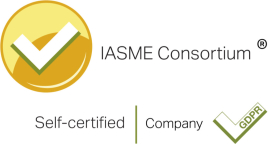Setting the right foundation for your property deals
As a developer, a large proportion of your business will consist of buying land, building properties and selling land and property assets. The way these deals are arranged will make a big difference to your tax liabilities, access to finance and commercial flexibility.

For developers, buying property often involves the formation of special purpose vehicles (SPVs): companies created for a single, specific purpose. That purpose is usually to acquire an asset or assets, such as land, property or other companies.
Here we take a look at the potential benefits of SPVs; their implications for corporate structure; and how they can affect the eventual sale of the asset.
Special purpose vehicles
Using an SPV may help when it comes to funding property deals (a perennial challenge for developers, as discussed in a previous blog).
Banks will rarely fund deals where other banks are already lending to the same company. SPVs overcome this barrier, allowing multiple projects to be funded by different lenders.
Corporate ownership
If you opt to use SPVs, you’ll need to think about their ownership structure.
Placing them within a corporate group – instead of owning them personally– allows you to move them around the group.
This flexibility can have tax benefits. Losses in one SPV can be offset against profits elsewhere in the group, legitimately reducing the group’s overall corporation tax liability.
Selling on
When divesting property, selling the SPV that owns it – rather than the asset itself – can also have significant commercial and tax advantages.
Within a group structure, your tax liability on the profit from the sale of an SPV can be reduced to zero by a relief called Substantial Shareholding Exemption. If the SPV is owned personally by the directors, then the profit on the sale of the shares in the SPV can qualify for Entrepreneurs’ Relief, and attract personal tax at 10%.
For the purchaser, meanwhile, buying the SPV means paying Stamp Duty at just 0.5%, rather than SDLT at a much higher rate – which should make the asset being acquired all the more attractive.
These various tax savings can benefit both the seller and the purchaser, and they can be reflected in the sale price of the asset. The ins and outs of this will of course need to be negotiated between the two parties.
There can be downsides to selling an SPV, however. It may limit the number of potential buyers, as not all purchasers will consider buying a company.
Case by case
These are just some of the many issues developers should consider. Getting the structure of a property deal right can have a range of commercial and tax benefits.
However it’s worth remembering that no two deals or development companies are the same; and that tax wouldn’t normally be the sole reason behind your structuring decisions. Commercial factors including funding and strategic objectives should always drive your decisions.
Each case must therefore be looked at on its own merits. This will require expert advice to help you find the best structure for every asset you purchase, own and sell.
You’ll need to talk to someone who knows not just the technicalities involved, but also the risks inherent in using these mechanisms. And, of course, someone who understands the unique nature of your property business.
Get in touch if you’d like to discuss your property transactions and ownership structures.
The information in this article was correct at the date it was first published.
However it is of a generic nature and cannot constitute advice. Specific advice should be sought before any action taken.
If you would like to discuss how this applies to you, we would be delighted to talk to you. Please make contact with the author on the details shown below.








